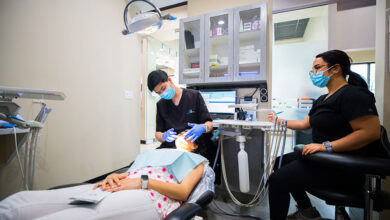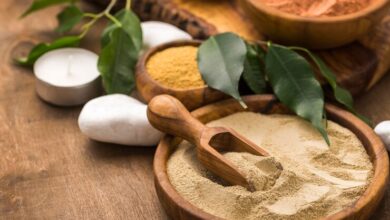Why do muscles experience pain and soreness?
Muscle pain and soreness are common experiences for many people, whether they’re athletes, fitness enthusiasts, or just someone who had an unusually active day. Understanding why muscles hurt and what you can do about it can help manage and prevent discomfort. This article will explore the causes of muscle pain, how to treat it, and how to prevent it, using simple and clear language.
What causes muscle pain and soreness?
1. Delayed Onset Muscle Soreness (DOMS)
One of the most common reasons for muscle pain is delayed-onset muscle soreness (DOMS). This typically occurs after engaging in a new or intense exercise routine. DOMS usually sets in 12 to 24 hours after the activity and can last for several days.
- Microtears in Muscle Fibers: When you exercise, especially if it’s a new or particularly strenuous activity, small tears occur in your muscle fibers. Your body repairs these tears, which leads to muscle growth, but the process also causes pain and soreness.
- Inflammation: The repair process involves inflammation, which can also contribute to the feeling of soreness.
2. Lactic Acid Buildup
During intense exercise, your muscles produce lactic acid, a byproduct of anaerobic metabolism. While lactic acid itself is not a direct cause of soreness, it can lead to a burning sensation in the muscles during activity.
3. Muscle strain
A muscle strain occurs when a muscle is overstretched or torn. This can happen suddenly or over time due to repetitive use. Strains are often accompanied by immediate, sharp pain and swelling.
4. Injuries
Injuries such as sprains, fractures, or dislocations can cause significant muscle pain. If you experience sudden, severe pain or suspect an injury, it’s essential to seek medical attention.
5. Medical Conditions
Certain medical conditions can cause muscle pain and soreness, including:
- Fibromyalgia is a chronic condition characterized by widespread muscle pain, fatigue, and tenderness in localized areas.
- Myofascial Pain Syndrome: A chronic pain disorder where pressure on sensitive points in your muscles causes pain.
- Infections: Viral infections like the flu can cause muscle aches and pain.
How to Treat Muscle Pain and Soreness
1. Rest
Giving your muscles time to recover is crucial. Avoid strenuous activities that might worsen the pain.
2. Ice and Heat Therapy
- Ice: Apply ice packs to the sore muscles for the first 24-48 hours after exercise to reduce inflammation.
- Heat: After the initial period, switch to heat therapy to help relax and loosen muscles and promote blood flow to the area.
3. Over-the-Counter Medications
Medications like ibuprofen or acetaminophen can help reduce pain and inflammation.
4. Massage
Massaging the affected area can help relieve muscle tension and promote blood flow.
5. Stretching and light exercise
Gentle stretching and light activities like walking or yoga can help reduce muscle soreness by improving circulation and flexibility.
6. Pain Relief Medications
For more persistent or severe muscle pain, medications like Pain O Soma can be effective. Pain O Soma comes in different dosages, including 350 mg and 500 mg, and can be purchased 500 mg Pain O Soma online. It’s important to follow the dosage instructions and consult with a healthcare provider before using it. You can buy 350 mg Pain O Soma online or 500 mg of Pain O Soma online at Primewellrx, a trusted source for pain relief medications.
How to Prevent Muscle Pain and Soreness
1. Warm- up and cool down
Warming up before exercise and cooling down afterward can help prevent muscle pain. A proper warm-up increases blood flow to the muscles, making them more flexible and less prone to injury. Cooling down helps gradually reduce heart rate and stretch muscles.
2. Gradual Progression
Avoid jumping into intense exercise routines without proper preparation. Gradually increase the intensity and duration of your workouts to give your muscles time to adapt.
3. Stay hydrated.
Dehydration can contribute to muscle cramps and soreness. Drink plenty of water before, during, and after exercise.
4. A balanced diet
A diet rich in essential nutrients, including protein, vitamins, and minerals, supports muscle health and recovery. Foods like lean meats, dairy products, fruits, and vegetables are excellent choices.
5. Regular exercise
Regular physical activity can help condition your muscles and make them less susceptible to soreness. Aim for a balanced routine that includes strength training, cardiovascular exercise, and flexibility exercises.
When to See a Doctor
While most muscle pain and soreness can be managed at home, there are times when you should seek medical attention:
- Severe Pain: If you experience severe or debilitating pain, it’s essential to see a doctor.
- Swelling or Bruising: If there is significant swelling, bruising, or signs of infection, such as redness and warmth around the sore muscle, seek medical help.
- Persistent Pain: If the pain persists for more than a few days or worsens over time, consult a healthcare professional.
Conclusion
Understanding why muscles experience pain and soreness can help you take steps to prevent and manage it effectively. Whether it’s due to exercise, injury, or an underlying medical condition, there are various ways to alleviate muscle pain. Rest, ice and heat therapy, over-the-counter medications, and proper stretching can all play a role in recovery. For more severe pain, medications like Pain O Soma, available in 350 mg and 500 mg dosages online at Primewellrx, can provide relief.
Preventing muscle soreness involves proper preparation before exercise, staying hydrated, maintaining a balanced diet, and engaging in regular physical activity. If you experience severe or persistent pain, it’s important to seek medical advice to rule out any serious conditions.
By following these guidelines, you can keep your muscles healthy and minimize the discomfort associated with muscle pain and soreness.



